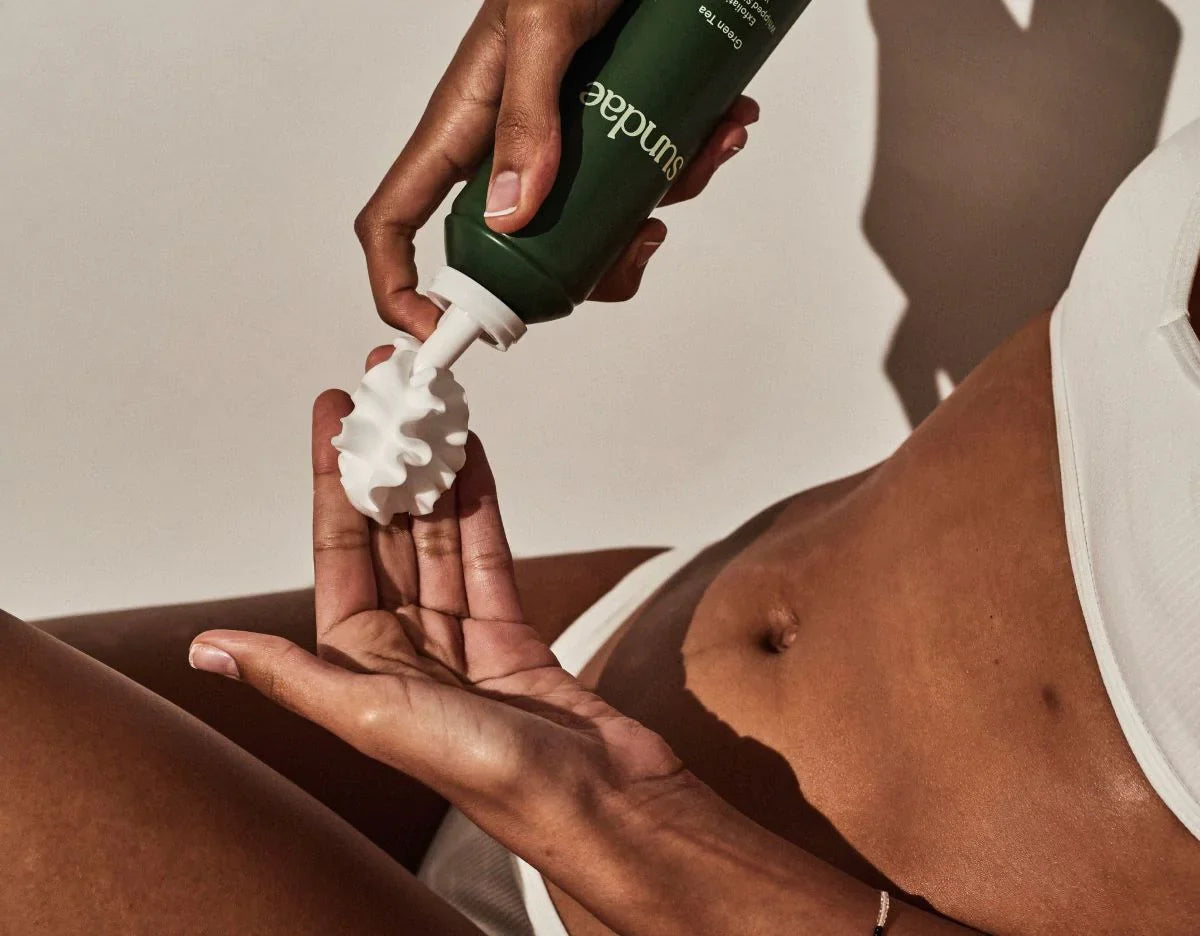Sundae's Guide To Exfoliating Different Skin Types

Like raking up dry leaves on the back lawn, dead skin cells are removed from the skin's outer layers during exfoliation. It can help eliminate dry or dull skin, boost blood flow, and brighten and enhance your skin's look. There are several exfoliating techniques. Which method you employ and how frequently you exfoliate should be based on your skin type and, sadly, not your star sign.
Getting Started With Exfoliation
Your skin type 100% dictates what approach you take to exfoliate. It's crucial to treat your skin gently while mechanically exfoliating. Use your preferred exfoliating tool or apply scrub with tiny, circular strokes with your finger. Use a brush sparingly and in short, delicate strokes. After about 30 seconds of exfoliation, rinse with lukewarm, not hot, water. If your skin has cuts, open sores, or is burnt, refrain from exfoliating. After exfoliating, use an SPF-containing moisturiser. And please, please be careful and aware that exfoliation is typically not advised for several skin problems, such as rosacea. When in doubt – a derm knows best.
How To Exfoliate Different Skin Types
I Have Sahara Desert Dry Skin!
For skin that is dry or flaky, exfoliation is essential. On dry skin, avoid mechanical exfoliation since it dries out the skin and can create microtears. AHAs work well on dry skin. Glycolic acid will promote healthy skin turnover by assisting in the removal of dead skin cells that are residing on the skin's surface. Just be sure to apply a moisturiser and SPF after using glycolic acid, as it may increase the skin's susceptibility to sun damage.
👉 You'll Love: Glow-up through the power of exfoliation
I Have Needy, Sensitive Skin
Hey, you with high-maintenance skin! Please, please do not over scrub, scrape or use mechanical exfoliating techniques – as tempting as it may be! These will aggravate your skin even more, which might result in redness. Instead, apply a light chemical exfoliant with a soft washcloth. You can also attempt a salicylic acid peel at your dermatologist's office for acne.
I Have Oily, Dramatic Skin
Manual exfoliation and brushing might benefit oily or thicker skin. Manual exfoliation helps remove an additional layer of buildup that may be present on the surface of oily skin. For optimal results, apply an exfoliator or scrub gently in circular movements.
I Have Healthy, Balanced Skin
Lucky duck! You may use any exfoliating technique if your skin is in good health. For this skin type, both manual and chemical exfoliation are safe. To determine which approach suits your skin the best, you might need to experiment.
👉 Get Started: A Beginner’s Guide To Everyday Body Care
I Have Combo-Deal Skin
Combining mechanical and chemical exfoliation may be necessary for combination skin, but – because it might irritate the skin – never use both on the same day. Use a moisturiser immediately if, after exfoliating, your skin feels dry—body part-specific exfoliation. And please, use caution when exfoliating the face and other delicate regions of the body, as over-exfoliating these regions might result in dryness, redness, and itching. No thanks.
More Info On Different Exfoliation Techniques
To exfoliate the skin, various techniques and instruments are ready and waiting at your fingertips – including physical and chemical options. Dry brushes and facial scrubs are examples of mechanical or physical exfoliation, whereas skin peels and acids (like our delicious Green Tea Exfoliating Shower Foam with AHA!) are examples of chemical exfoliation.
Try a Brush
To exfoliate layers of dead skin cells from the face or body, a bristle brush can be your smoothing and soothing BFF. Some techniques involve a dry brush to improve circulation and stimulate lymphatic drainage. Others can be used together with your favourite body wash or face cleanser.
Try a Soft Sponge
A lovely option if you’re seeking a more moderate, refreshing kind of exfoliation. In the shower, lather an exfoliating sponge with warm water, body wash, or soap and clean your body with soft, circular motions.
Try Gloves
You can wear a set of exfoliating gloves if you have trouble holding brushes or sponges. In the shower, lather it up with soap or body wash. Gloves can be helpful for broad regions like the arms or legs.
Try a Physical Scrub
Use a soft, circular motion to apply this straight to the skin. After using the scrub, wash your skin with warm water.
Try a Chemical Peel
Alpha-hydroxy acids in chemicals (AHAs). Glycolic, lactic, tartaric, and citric acids are some examples of AHAs. These function by dissolving the connections binding dull, dead skin cells to the surface of your skin. Your skin will naturally shed dead cells due to these—beta-hydroxy acids (BHAs). Salicylic acid and beta hydroxyl are two examples of BHAs. These could be more suitable for skin prone to acne.
Exfoliating Different Parts Of The Body
Another thing to note is that different body parts require a different type of TLC to avoid breakouts, redness or dermis damage.
Face
The type of exfoliant you use on your face depends on your skin type. Use a scrub to mechanically exfoliate your face by gently massaging it into the skin with your finger. Apply gentle, circular pressure. Use warm water to rinse.
Legs & Arms
Using a brush, sponge, or glove to exfoliate your arms and legs is the simplest method. This can promote circulation and aid in the removal of dead skin cells. Find a body scrub from your neighbourhood chemist or online, then use it to lather up in the shower. It could be worth having a play around with dry brushing, too.
Hands & Feet
To exfoliate hands and feet, scrubs and peels are available. A pumice stone may also be used to exfoliate feet.
Private Parts
Sensitive areas like your underarms, pubic region and bikini line can be exfoliated with a loofah or body brush. Always take a warm shower before doing this to soften your skin, and be sure to wash your hands thoroughly afterwards.
How Often Should I Exfoliate?
Wondering how frequently one should exfoliate? Good Q! Because exfoliation has benefits that include getting rid of dead skin cells, increasing circulation, stimulating skin shedding, and enabling improved serum and moisturiser absorption – your skin type and the exfoliation method will determine how frequently you should exfoliate. For instance, some chemical exfoliants can be powerful and shouldn’t be used too often. In most cases, exfoliating skin once to twice a week is sufficient to treat dry skin effectively. Happy (gentle) shedding!
Happy Sundae x
Have you tried all our whipped, creamy flavours yet?? 👇
Pomegranate Shower Foam | Coconut Shower Foam | Vanilla Shower Foam
Written By: Lizzie Waley (Sundae Co-Founder & Body Care Enthusiast) | LinkedIn
Fact Checked: Charnnie Frimpong (Sundae Content Marketing Manager) | Linkedin

